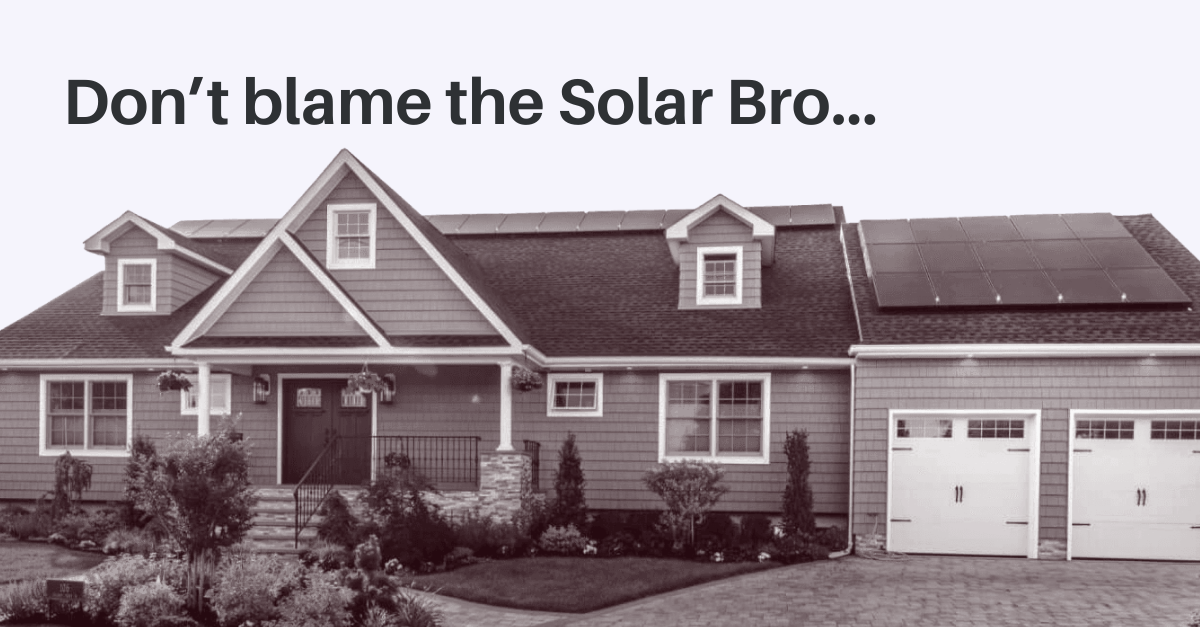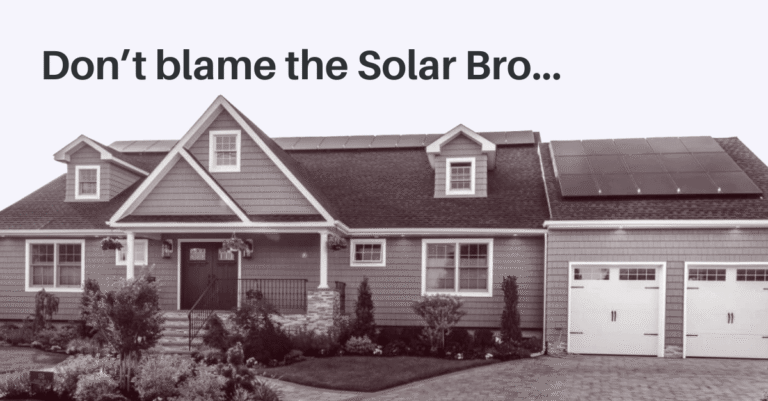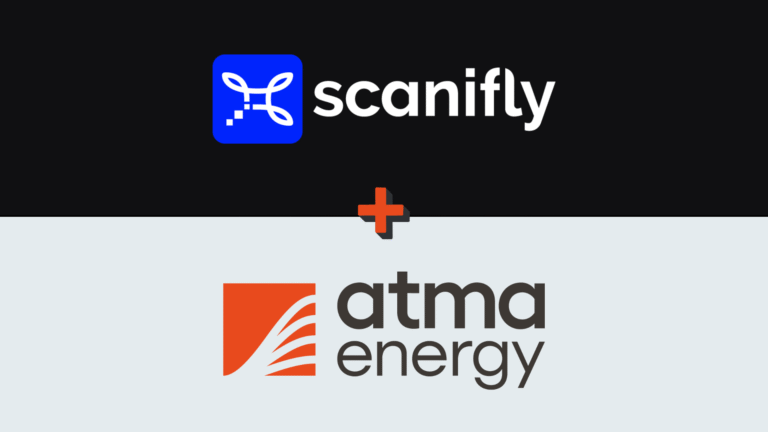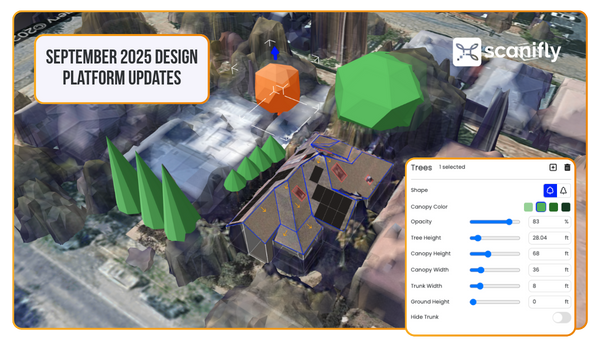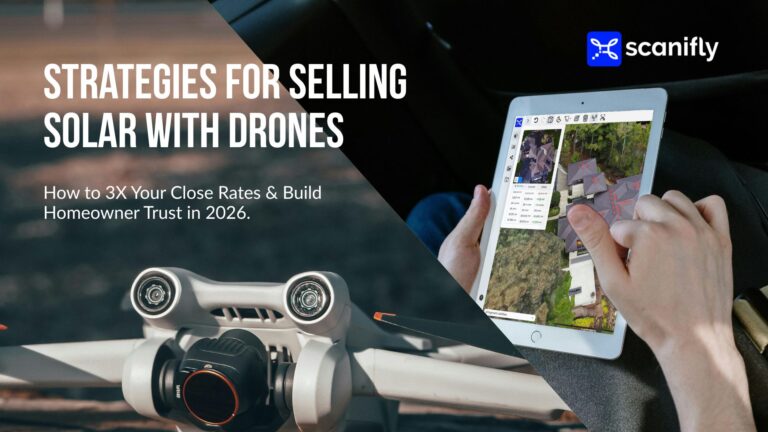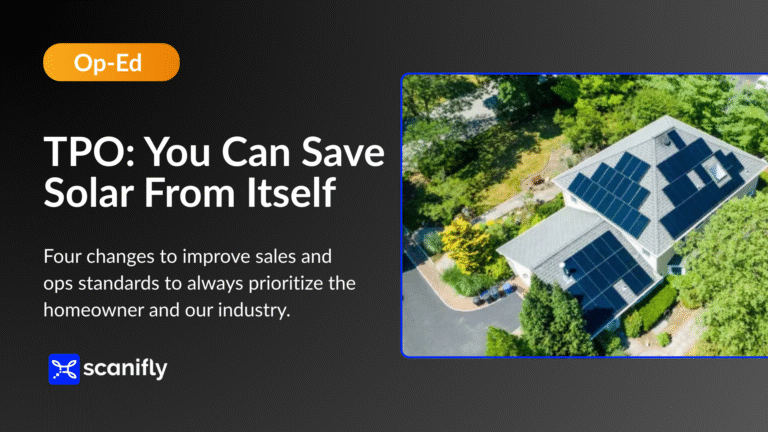Everyone loves a good scapegoat. And in solar, we’ve found the perfect one: the “Solar Bro.”
You know the type. The door-knocking sales rep. The commission-hungry closer. Everyone points fingers at the Solar Bro when things go wrong, blaming them for ruining the industry’s reputation.
But here’s the thing nobody wants to admit: the Solar Bro is responsible for a lot of solar’s success.
And perhaps it’s time we stopped looking for someone to blame and started looking at the real, systemic issues that created this mess in the first place.
Give Credit Where It’s Due
Let’s start with some inconvenient facts about what we’ve accomplished as an industry:
- We’ve grown from 1-2% of the US energy mix to over 6% in just one decade
- We’ve deployed so much solar that panel and hardware prices have plummeted by 90%
- We’ve made solar the cheapest new energy source available
- Solar has been the #1 new energy source added to the grid for five straight years
- With storage included, solar represents over 80% of new energy capacity in 2024
These aren’t small wins. These are massive, industry-transforming achievements that have fundamentally changed how America generates power.
And who sold a lot of it? Probably not the multi-site, educational sales consultant. Love them or hate them, many sales were made by Solar Bros through cold calling, door-to-door sales, and hustling for deals.
We should at least acknowledge this.
The Door Knocking Reality Check
Look, I’ll be honest, door-knocking isn’t my thing. I don’t answer my door for anyone. I never did growing up, and I don’t now as a homeowner now.
But it works in certain markets.
Whether you’re in Utah, where it’s common practice, or you’re reaching someone with mobility issues who rarely leaves home, or you’re connecting with people who don’t engage with technology, door-knocking can get results.
I have a friend here in New Jersey who’s literally the last person I’d expect to respond to a door knocker. She shocked me when she invited the rep in, had pizza with him for two hours in her backyard, and then bought solar. It can work.
It doesn’t mean it has to work for you. But it needs to be done ethically, without pressure, with proper regulation, and clear ground rules.
So let’s stop making blanket statements against door-to-door sales simply because it’s not our preferred method.
The Bad Actor Problem Is Real
Stay with me here! Before you think I’m completely naive, YES, admittedly, there are serious problems with bad actors in our industry.
We’ve all read the various negative articles, including Time’s How Solar Sales Bros Threaten the Green Energy Transition and The Rooftop Solar Industry Could be on the Verge of Collapse, or seen NPR’s coverage about solar’s reputation problems. We’ve seen the horror stories of homeowners stuck with predatory loans or leases they can’t afford. We know about pressure sales tactics, underperforming systems, promises that never materialize, and sales reps who crush their blitz sales for a few weeks and then throw their phones away. This is a sad reality that’s all too common in our industry.
It reminds me of the financial crisis from a decade ago. Here we are, supposedly saving the environment and providing energy independence for our country, yet we’re developing a reputation akin to that of predatory mortgage lending. That’s a real problem.
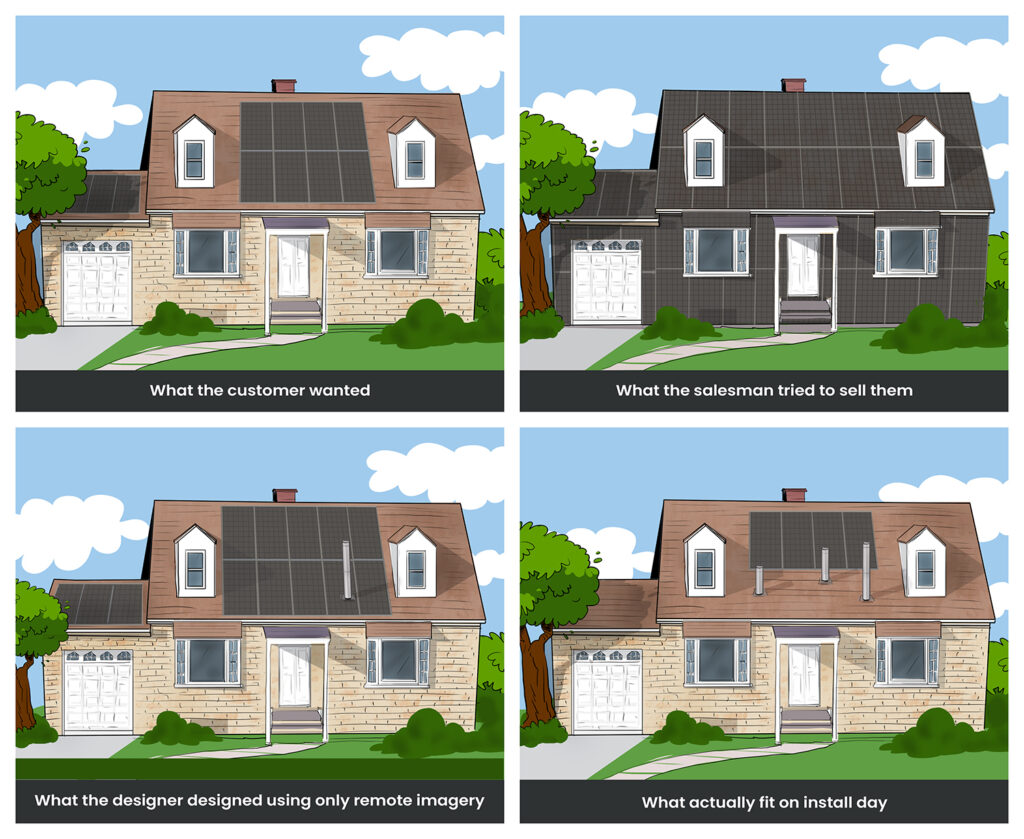
We have attorneys general investigating our industry and state governments implementing new regulations on cancellation periods and sales practices. But here’s what drives me crazy: You can’t blanket-blame the Solar Bro when they’re operating within the system we’ve all created.
The Real Problem: It’s Systemic
Sales Reps Follow Incentives (Obviously)
Sales reps—especially commission-only reps—will naturally gravitate toward whatever pays the most. That’s not a character flaw. That’s what makes them good sales reps.
If you want different behavior, change the incentives. Don’t blame them for responding rationally to the compensation structure you created.
Yes, there are bad actors and unethical characters. There is a group of these folks who I’d love if they left solar. That said, there’s a framework that salespeople operate within, which we’ve created over many years.
Loan Products Drove the Wrong Behavior
For about a decade, we operated in a low-interest-rate environment where everything was about “selling savings versus the utility rate.”
Here’s the problem: lenders were underwriting homeowners’ FICO scores and ability to pay loans, not system performance. We weren’t looking at system health, proper sizing, or hardware aesthetics and longevity. We were doing financial gymnastics around savings calculations.
That’s not selling solar. That’s pushing financial products.
The result? Tons of underperforming systems because nobody was checking whether the solar actually worked as promised.
Is that the Solar Bro’s fault, or the lender’s fault?
Design Tools Create Subjective Problems
Most solar sales today close using remote design tools—old, grainy satellite imagery, outdated LIDAR data, skewed aerial images, trees that were never there or have grown significantly since the image was captured.
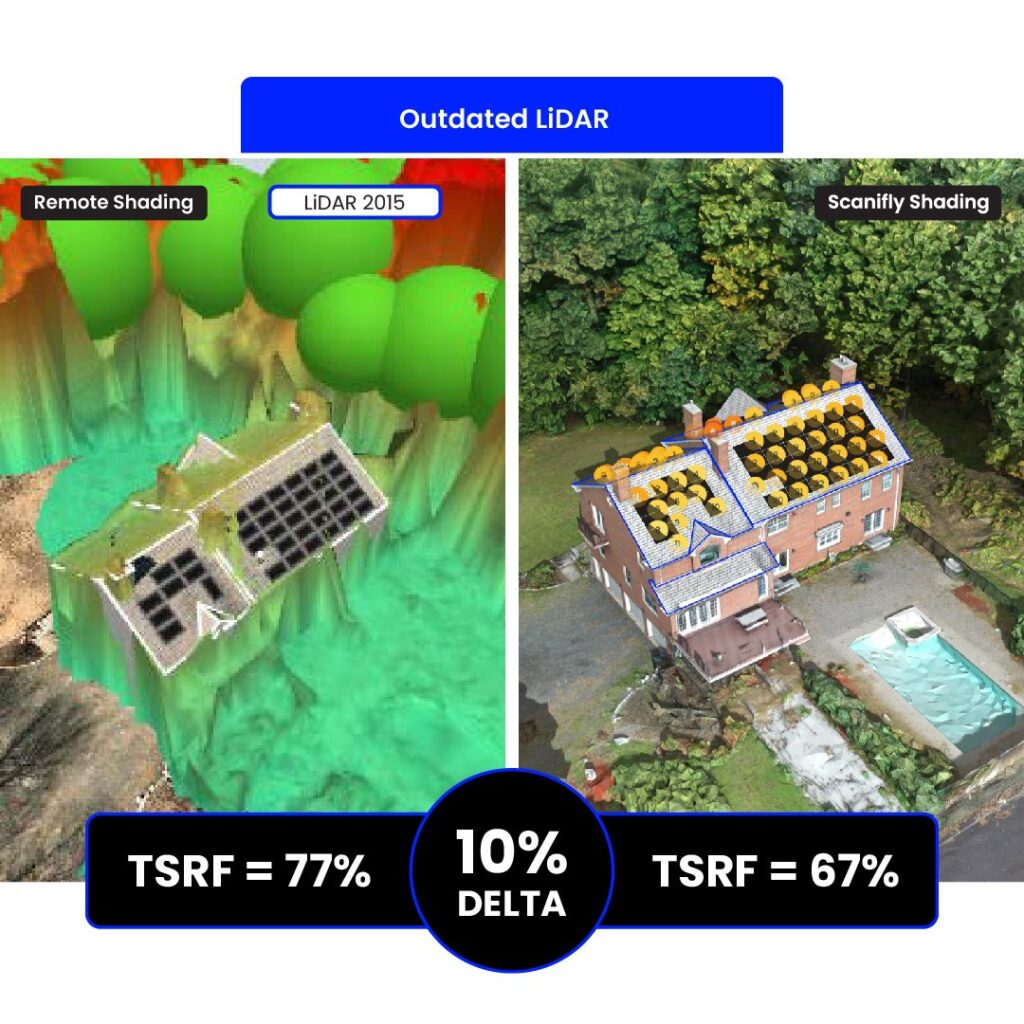
Don’t get me wrong—remote tools are great for starting conversations. But most deals close on this remote data without ever getting accurate, on-site verification before installation.
And what about a sales rep doing their own design? Many are incentivized to maximize system size for a bigger commission. “Let the ops side figure it out; the design tool and underlying imagery indicated that the system would fit!”
Remember the old days of the Solmetric SunEye and Solar Pathfinder? On-site shading analysis with real-time data?
What about when it’s a design desk using remote design tools? Well, they’re making their best guess with the data they have, but often under aggressive deadlines and output quotas. Back in the day, some design desks would be bonus’d on designs completed, not design accuracy.
We’ve allowed inaccurate design tools to become the standard, then blamed the Solar Bro when systems underperform.
EPCs Lost Control
Here’s the big one: We have a massive tail-wagging-the-dog problem.
EPCs are trying to grow as fast as possible, and once they’re in multiple states, they have enormous operating expenses to cover. Solar isn’t a high-margin business—it’s a construction project that requires precision.
But some EPCs get to a size where they can’t reject volume from large sales organizations. They need that volume to sustain working capital and fuel growth.
Once you let the sales organization dictate how you fulfill projects, you’ve lost. Maybe not this year, but in years down the road.
Good EPCs run their businesses knowing they need to be there for homeowners for 25 years—for workmanship warranties, hardware issues, and service calls after storms or emergencies.
The moment an EPC starts cutting corners—installing before permits, submitting bad data to finance companies, installing wrong modules, putting panels on north-facing roofs because “they have to”—that’s where we lose as an industry.
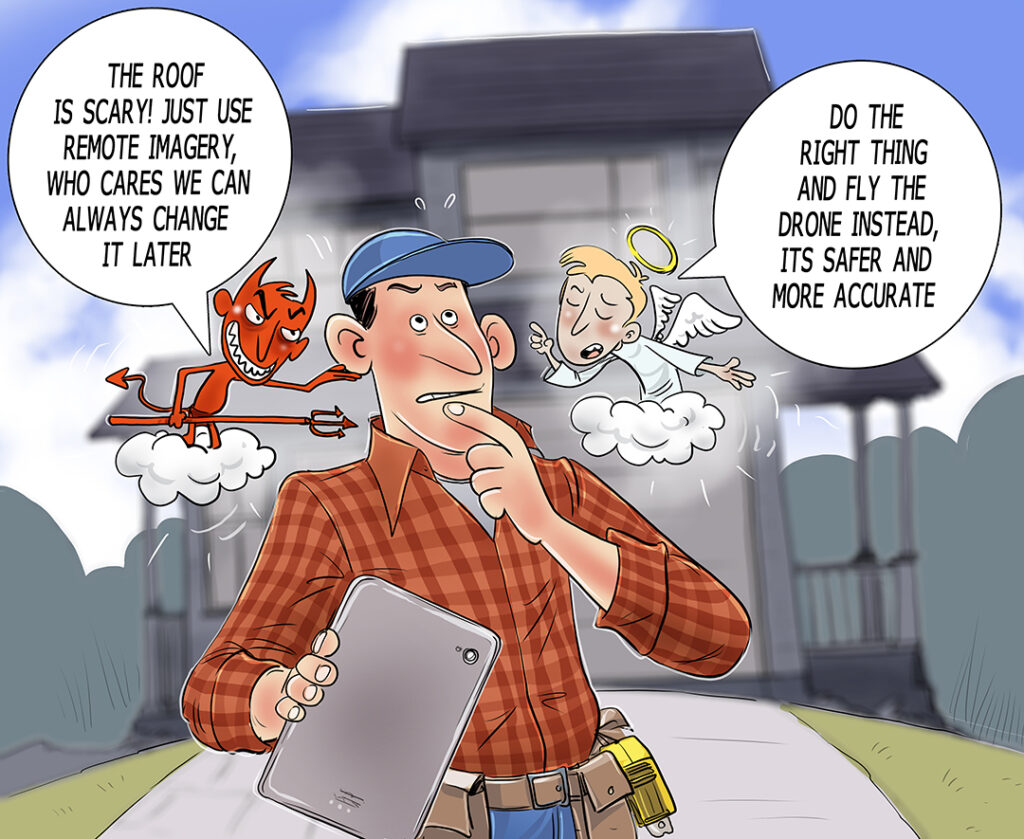
Bad Financial Habits Became Standard
Too many companies use funding from finance companies to finance their working capital and operations. You’re taking money from project A to cover hardware and operations for projects B, C, and D.
That’s not running a business. That’s a death spiral.
This is also why M0, M1, and milestone-based payments before PTO almost entirely went away. It is a good change, but we’re still seeing companies use project funding to cover operating expenses.
The TPO Opportunity
Here’s what’s interesting about next year: TPO providers will have unprecedented leverage. There are only a few national players left, and they’ll have a line of contractors around the corner wanting to work with them.
TPO providers: YOU can set the standards for our entire industry.
Here’s what you should demand:
- Better designs with on-site shading analysis
- NAPCEP-trained sales reps who understand system installation
- Deal desks that do design work instead of letting biased sales reps maximize system sizes
- Payment structures that reward quality work and pay on time
You can either fall into the same bad habits that caused some TPO companies to go bankrupt over the past few years, or you can raise the bar and set a new standard starting in 2026.
Stop Looking for Scapegoats
The problem is systemic. We’ve been blaming the Solar Bro for the past couple of years, and where has that gotten us?
Maybe it’s time to thank the Solar Bro instead. Yes, I said it!
There are unquestionably bad actors who need to be held accountable. But the vast majority of these folks are working within the systems and incentives we’ve created as an industry.
We need to fix this ourselves before the government decides to fix it for us.
We’re in a fight against utilities for energy independence and American energy freedom. We’re supposed to be offering the lowest-cost power while saving the environment.
Let’s stop pointing fingers and start building systems that support ethical practices, accurate designs, and long-term customer success.
The Solar Bro isn’t the only problem. The system is. And we have the power to change it.

